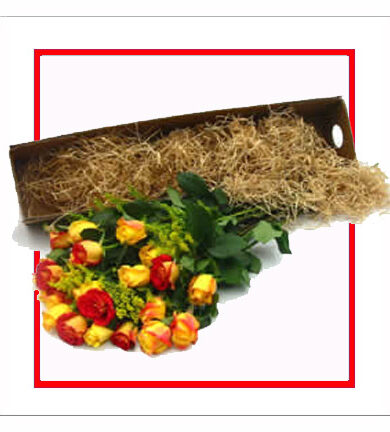Within the sanctuary the presence of guar (Indian Bison) and tigers are very much in evidence, as reported by the multiple sightings by the visitors. Other animals include the leopard, chital, panthera, striped hyena, canis, sloth bear, dhole, sambar deer, nilgai, Indian four-horned antelope and chinkara populate the sanctuary in equal numbers. |
The city is connected with Mumbai and Kolkata through the National Highway network. Bilaspur is on NH-200 connecting Raipur and Raigarh on either side.Also NH 111 starts from Bilaspur which connects the city to Ambikapur and Varanasi.Other state highways are SH 7and SH 5. There are regular buses and taxis to all nearby towns and cities. |
The sewerage and drainage system is practically nonexistent, so much so that, like any other Indian town even the first shower of monsoon floods many areas. A massive restructuring of sewerage system of the whole city and suburbs is undertaken by the “Bilaspur Nagar Nigam”, and is expected to be completed in the year 2013. |
Khutaghat :Located 55 km (34 mi) away is Khutaghat, where there is a dam and reservoir and it is possible to stay in the prebooked Irrigation Department. The beautifully located “Hill Top Rest House” overlooking the vast expanse of the blue water reservoir is chosen by many for accommodation. |
Power Plants – Bilaspur has got India’s second largest power plant of NTPC at Sipat which generates power of 2980 MW with 3 units of 660 MW each and 1 unit of 1000 MW.Many thermal power plants are coming up in surrounding area of Bilaspur.Other Notable are Nova,KSK,Gitanjali, Mahanadi etc. |
South Eastern Coal Fields Limited (SECL) a subsidiary of Public Sector Unit Coal India Limited (CIL) – A Maharatna Company is situated with headquarters at Bilaspur. SECL is a Miniratna PSU under Ministry of Coal, with several awards in its credentials including best PSU award in 1997-98. |
Beyond the sanctuary, on way to Amarkantak, there are Government Guest Houses in Achanakmar, Keonchi and Lamni. These guest houses can be booked with governmental officials in the district head quarters. These guest houses are well built and the arrangements are also good. |
Historically, Bilaspur was a part of Kalchuri dynasty of Ratanpur. The city, however, came into prominence around 1741, the year of the Maratha Empire invasion, when a Maratha official took up his abode there and began to build a fort, which however was never completed. |
Hotels – There are many budget and mid-level hotels in the city. The Aananda Imperial (4 star deluxe) Hotel,Intercity, Panchvati , Clovers , East Park , Central point and Surya are famous hotels, located in the city. Marriott Courtyard will soon open at City Mall 36. |
Bilaspur is known for its aromatic Doobraj rice, Samosa, Mango, handloom woven colorful soft Kosa silk Saris, and more for its rich, varied and colorful culture. Bilaspur District has a major contribution towards the naming of Chhattisgarh as “Dhaan Ka Katoora”. |
Bilaspur is situated on the banks of the rain-fed Arpa River, which originates from the high hills of the Maikal Range of central India. This dolomite rich region is surrounded by lush green forests in the north and the coal mines of Hasdeo valley in the east. |
Historical records like Imperial Gazetteer of India, Vol 8, 1908 note that the city is said to be named after a fisher-woman by name “Bilasa” in the 17th century, and for a long period it consisted only of a few fishermen’s huts. |
The best time to visit is from October to March. However, one can visit it anytime of the year to shop and to enjoy the diversity of the culture which is very different from other parts of the country and for the better for sure. |
Medical facilities: One medical college and hospital managed by the University, One dental college managed by the Barfani Academia, one of the biggest 9 unit of the Apollo Hospital and many private nursing homes and clinics. |
In 1901, the population of Bilaspur was 18,937 and it was eighth-largest town in the Central Provinces of British India. In 1908, weaving of tasar silk and cotton clothes were recorded as the major industries of Bilaspur. |
The climate is pleasant and mild in the winter ( minimum temperature 10 °C, 50 °F). There are medium rains in the monsoon season. The summers are very hot and dry maximum temperature 45+ °C, 113 °F, maximum humidity |
Recently the city administration has started a city bus service which is available on three routes at present, i.e. City Railway Station To Koni, City Railway Station To Seepat, and City Railway Station To Usalapur. |
For local transportation three-wheeled, black and yellow Auto rickshaws, referred to as autos, are a popular. Local transportation also includes man powered cycle Rickshaws, horse drawn tangas , city bus etc. |
Bilaspur district is surrounded by Koria District in north, Shahdol District of Madhya Pradesh,Mungeli District in West, Balauda Bazar-Bhata Para District in south and ] & Janjgir-Champa District in east. |
Legal: The day the state of Chhattisgarh was constituted (1 November 2000) with its capital at Raipur, the High Court of Chhattisgarh was established at Bilaspur. It is the 19th high court of India. |
Electricity is government regulated and as of now, no power cuts are effected, thanks to the massive expansion in energy generating capacity both by public and private companies in the energy sector. |
The city was taken over by the British East India Company of Great Britain in the year 1854 when the then ruler of the region, Bhosale of Nagpur belonging to Maratha Empire died without an heir. |
The management of Bilaspur district was taken over by the British Government in 1818, before this it was under harsh, extortionist Marathaan rule for about 60 years. Bilaspur district was constituted in 1861, followed by Bilaspur municipality in 1867. Famines in the Bilaspur district were recorded by the British administration in 1828-9, 1834-5, 1845-6, 1868-9 and 1899–1900. In 1868-9 and 1899–1900, the rains failed almost completely, resulting in severe distress, migration and desertion of villages. After the 1868-9 famine there was prosperity for the next 25 years; but in 1895 there was a very poor harvest, followed in 1896 by a complete failure of crops, and severe famine continued throughout 1897. In that year the mortality rate was as high as one in six people. The famine of 1897 was followed by two favorable years; but in 1899 the monsoon failed completely and the rice crop was wholly destroyed. |
Bilaspur railway station is a regional hub for the railway system. It is the busiest junction of Chhattisgarh and fourth busiest of central India.It is the Zonal Head Office of the South East Central Railway. It is well connected to the rest of the country through the Indian Railways. The Rajdhani Express (Bilaspur-New Delhi) via. Bhopal bi-weekly connects Bilaspur to New Delhi. The station is on the Tatanagar–Bilaspur section of Howrah-Nagpur-Mumbai line and another rail is for Delhi via Katni.It is also the originating station for many superfasts and express trains including: Bhopal – Bilaspur Express, Bilaspur Rajdhani, Chhattisgarh Express and Narmada Express. |
Besides having places associated with its ancient and cultural heritage, the city is also famous for its wildlife variety. This is because of its situation within the state. It is reputed for having some of the densest forests in the country and an even spread of hills and rivers. One of the places worth visiting is the Achanakmar Wildlife Sanctuary. Famous for the variety of its wildlife, the sanctuary is spread over an area of 551 km² (213 mi²) and was set up in 1975 under the Wildlife Protection Act. The sanctuary is 55 km (34 mi) away form Bilaspur and is closed during the monsoon season. |
Bilaspur is center of electric power generation in India. Bilaspur and surrounding area generates 10,000 MW of electricity and additional 50,000 MW are in plan in next few years. As many as 22 companies are interested to tap an estimated power generation potential of 50,000 megawatt in the region. The Railways has got a major boost with big energy sector players set to invest Rs.5,000 crore in three proposed railways corridors around Bilaspur. Read more at: http://indiatoday.intoday.in/story/cash-strapped-railways-gets-big-coal-boost/1/203474.html |
Daily connections are available for Kolkata, Mumbai, New Delhi, Pune, Nagpur, Indore,Ahmedabad, Bhopal, Amritsar, Agra, Roorkee, Haridwar,Vishakhapatnam, Bhubaneswar, Puri, Tatanagar, Patna, Jabalpur, Raipur, Varanasi etc.It is also connected by direct trains to Thiruvananthapuram, Chennai, Ernakulam,Tirupati,Tirunelveli,Bangalore,Bhuj,Gandhidham,Okha,Porbandar ,Dhanbad,Hyderabad, Jaipur, Gorakhpur,Shirdi ,Udaipur,Bikaner Jammu,Jodhpur, Guwahati,Kanpur,Lucknow, Ranchi, and many other cities and towns in India. |
Bilaspur is famous for Doobraj rice, Samosa, Mango,chila,rice role,etc. No trip to Bilaspur is complete without trying Samosa from various vendors. The large but light samosa of Bilaspur are different than the Punjabi kind (which is predictably bulky and full of blustery masala) .At Bilaspur, this pale-gold, dimpled temptress seduces the travelers. More http://timesofindia.indiatimes.com/home/opinion/bachi-karkaria/erratica/Venus-Samosas-and-Mars-Bars/articleshow/824969.cms? |
Guru Ghasidas (1756–1836) started a religious movement Satnamis (meaning the worshippers of Satnam) between 1820 and 1830 primarily around the Sonakhan forests. This religious movement preached that god is not idols or not found in idols but god is synonymous with truth. His community was a farming community, though in Hindu caste hierarchy they have been put in the Schedule caste. The university at Bilaspur is named after him as Guru Ghasidas University. |
The downtown is called Gol Bazaar (Circular Market). Gol Bazaar, Sadar Bazaar and company Garden Chowk are buzzing and vibrant but overcrowded with slow moving traffic. In contrast there are some newly developed areas as well. The Vyapar Vihar is newly developed commercial and goods transport area. Bilaspur has Chhattisgarh’s first Hi-tech Bus stand at Bodri.It has High Court of Chhattisgarh which is Asia’s largest court (in area). |
As of 2011 India census, Bilaspur had a population near about 4,54,000.Final population data are yet to come which is estimated near about 6,00,000.Males constitute 51% of the population and females 49%. Bilaspur has an average literacy rate of 87.29%, higher than the national average of 74%; with male literacy of 92.94% and female literacy of 81.33%. 15% of the population is under 6 years of age. |
Bilaspur has developed as a centre of education for Chhattisgarh with students from all over the state coming to Bilaspur to study for engineering, medical and administrative officers’ competitive exams. Along with the older schools, which provided excellent education, many new schools make Bilaspur the center for excellent school education too. Bilaspur has following Educational Institutions. |
Bilaspur is a city in Bilaspur district in the Indian state of Chhattisgarh, situated 111 km (69 mi) north of state capital, Raipur. It is the second-largest city (after raipur) in the state. It is the administrative headquarter of Bilaspur district. Chhattisgarh State High Court at Bilaspur privilege it to host the name ‘Nyayadhani’ ( Law Capital) of the state. |
Railways arrived at Bilaspur in the decade 1880-90, with the arrival of the Bengal Nagpur Railway. In 1888 Mistri Jagmal Gangji and other Mistri Railway Contractors laid the first railway tracks from Rajnandgaon to Bilaspur,and in that same year fellow Kutchi contractor Khoda Ramji and others built the line from Bilaspur to Jharsuguda, including the bridge over the Champa river. |
Industries: Around Bilaspur, there are many Industrial Areas, including Tifra,Sirgitti and Silpahri Industrial Growth Centres. Chhattisgarh Laghu Evam Sahayak Udyog Sangh or CLSUS is an association of industries which represents all major industries of Bilaspur and Chhattisgarh. BEC Fertilizers-A unit of Bhilai Engineering Corporation is situated in Sirgitii Industrial Area. |
In 1890 the present railway station and yard were constructed by the famous Gujarati railway contractor Jagmal Gangji. His son Mulji Jagmal Sawaria was later given the title of “Rao Sahib” by the British for his contribution to the development of the town, railways and the district. Jagmal Block and Jagmal Chowk in the city are named after Jagmal Gangji Sawaria. |
Over the years, Bilaspur has developed with wide roads, cafes, hotels, street lighting and some beautiful squares. However the last decade has seen large scale unregulated urbanization and residential and commercial expansion, overstraining the water resources and generally defunct civic amenities due to its indifferent officials and politicians. |
Within the sanctuary the presence of guar (Indian Bison) and tigers are very much in evidence, as reported by the multiple sightings by the visitors. Other animals include the leopard, chital, panthera, striped hyena, canis, sloth bear, dhole, sambar deer, nilgai, Indian four-horned antelope and chinkara populate the sanctuary in equal numbers. |
The city is connected with Mumbai and Kolkata through the National Highway network. Bilaspur is on NH-200 connecting Raipur and Raigarh on either side.Also NH 111 starts from Bilaspur which connects the city to Ambikapur and Varanasi.Other state highways are SH 7and SH 5. There are regular buses and taxis to all nearby towns and cities. |
The sewerage and drainage system is practically nonexistent, so much so that, like any other Indian town even the first shower of monsoon floods many areas. A massive restructuring of sewerage system of the whole city and suburbs is undertaken by the “Bilaspur Nagar Nigam”, and is expected to be completed in the year 2013. |
Khutaghat :Located 55 km (34 mi) away is Khutaghat, where there is a dam and reservoir and it is possible to stay in the prebooked Irrigation Department. The beautifully located “Hill Top Rest House” overlooking the vast expanse of the blue water reservoir is chosen by many for accommodation. |
Perfect flowers to express your emotionsShop Now














































































































































































